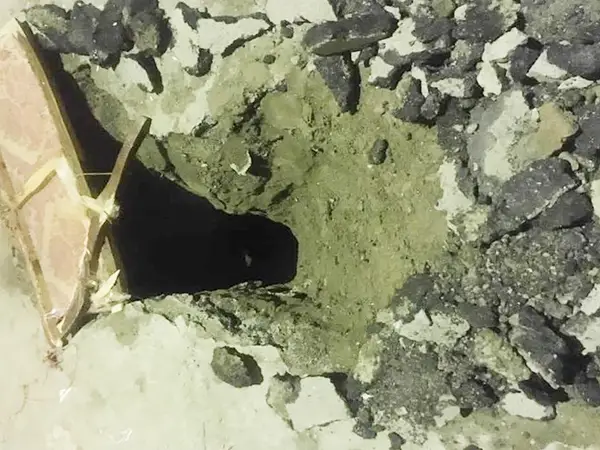Iran’s Tehran province is literally sinking with large sinkholes and fissures appearing in the densely populated region as underground water reserves decline.
This time a subsidence has led to the evacuation of about a dozen residential units in one of Tehran’s southern neighborhoods.
Local media reports said on Friday that the new sinkhole in Nasimshahr is two meters deep with a length of over 15 meters.
Officials at Tehran’s municipality have blamed human error, saying that the incident is under investigation and that people can come back to their homes soon, but such incidents are usually due to decreasing ground water levels.
According to the government, 31 cities and towns in Esfahan province, 30 cities in Tehran province, 25 urban centers in Kerman province and 24 cities in Khorasan Razavi province are in imminent threat of subsidence. In some regions the ground has sunk by 30 centimeters or one foot.
Fissures have appeared in the historic city of Esfahan, threatening UNESCO protected landmarks. Residents held large protests in November demanding their traditional share of water for the city’s river. Security forces used force and shotguns to suppress the protests, injuring dozens of people.
Land subsidence is not limited to big cities with big construction projects. In many areas in Iran cracks and huge hollows that resemble meteor craters have appeared in the ground in recent years. Ali Saberi, a geologist told local media that one million hectares of land in the country is affected by subsidence and the main cause is unlimited extraction of ground water.
Land subsidence − which can occur for many reasons including human activities like mining, extracting underground water, petroleum, or gas − is a growing problem in many other places including Mexico City where a growing population of 10 million has resulted in the exhaustion of underground water resources.
Some blame the water situation in Iran on an emphasis in achieving self-sufficiency in agriculture, including water-intensive crops such as rice and other grains, which was the aim of successive Iranian administrations even before the United States imposed ‘maximum pressure’ sanctions in 2018.
Supreme Leader Ali Khamenei in 2000 and 2001, promoted an increase in population and self-sufficiency in wheat and rice as the main agricultural goal.
Repeated droughts in Iran have made water management an urgent issue, but critics say wrong water conservation policies or the lack of any planning have played a major role in the current situation.
